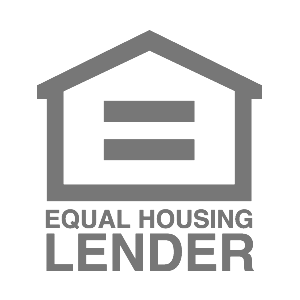
If you’re planning to take out a loan, such as a mortgage or personal loan, your debt-to-income ratio (DTI) will be one of the factors lenders use to decide whether to approve you and what interest rate to offer you. A high DTI may make it difficult to qualify for a loan, or it can result in paying a higher interest rate.
Here’s a closer look at what a DTI is and how it works, along with tips for how to lower your DTI if it’s too high.
In This Article
What is debt-to-income ratio (DTI)?
A debt-to-income ratio (DTI) is a measure of how much debt you have compared to your income. It’s calculated by dividing your total monthly debt payments by your gross monthly income.
Lenders use DTI ratios when deciding if they should approve you for a loan. In general, lenders prefer borrowers with lower DTI ratios, as these borrowers are considered less risky.
However, there is no one-size-fits-all DTI ratio lenders use, as they’ll also consider other factors such as your credit score and income.
How to calculate your debt-to-income ratio (DTI)
To calculate DTI, you’ll need to gather your gross monthly income (before taxes) and your total monthly debt payments.
Your monthly debt payments include:
- Your mortgage or rent payment
- Your car loan payment
- Your student loan payment
- Your credit card payments
- Any other types of consumer debt
Once you have this information, use this DTI formula to figure out your ratio:
DTI = (monthly debt payments / gross monthly income) x 100
This will give you your DTI ratio, expressed as a percentage. For example, if your monthly debt payments are $2,000 and your gross monthly income is $5,000, your DTI ratio would be 40%.
What is a good debt-to-income ratio (DTI)?
A DTI ratio of 36% or less is generally considered good, according to the Consumer Financial Protection Bureau. This means that 36 cents of every dollar you earn is going toward debt payments, and the rest is yours to do as you wish.
A DTI ratio of 45% is the maximum debt-to-income ratio allowed for home loans backed by Fannie Mae. If your DTI ratio is higher than 45%, you may still qualify for certain loans, but you may pay a higher interest rate or receive a smaller loan amount.
7 ways to lower DTI
If your DTI is above the 36% to 45% range, you may have trouble getting approved for loans. Here are some steps you can take to lower your DTI ratio.
1. Pay more than the minimum payment
When you only pay the minimum balance on your credit card, you’re barely making a dent in your debt. Make an effort to pay more than the minimum each month, and you’ll see your debt start to decrease.
In turn, this will improve your DTI. If you can’t afford to pay more than the minimum, consider getting a side job or cutting back on expenses.
2. Consolidate your debt
If you have multiple loans and credit card balances, consolidating your debt can be a smart way to lower your debt-to-income ratio. Debt consolidation involves taking out a new loan to pay off your existing debts, leaving you with just one monthly payment to manage.
Here are three ways you can consolidate your debt:
- Personal loans: You can take out a personal loan through Prosper to pay off your existing debts. Personal loans typically have fixed interest rates and repayment terms, which can make it easier to budget and plan for your payments.
- Balance transfer credit cards: Some credit cards offer 0% introductory APR periods on balance transfers. This can be a good option if you have high-interest credit card debt that you can pay off within the promotional period.
- Home equity loans or HELOCs: If you own a home, you may be able to use your equity to secure a home loan or line of credit to consolidate your debt. These options typically have lower interest rates than personal loans or credit cards, but they come with the risk of losing your home if you can’t make your payments.
3. Use the debt snowball or avalanche method
The debt snowball and debt avalanche methods are two popular strategies for paying off debt and lowering your debt-to-income ratio.
The debt snowball method is where you pay off your smallest debt first, while still making the minimum payments on all your other debts. Once you pay off the smallest debt, you move on to the next smallest one and then the next smallest one. This method can provide a sense of accomplishment and motivation as you see your debts disappear one by one.
The debt avalanche method involves paying off debts with the highest interest rates first, while making minimum payments on all other debts. By targeting high-interest debts, you can reduce the overall amount of interest you pay over time, potentially saving you money in the long run.
4. Stop using credit cards
If you’re trying to reduce your debt–and your credit card is preventing you from making real progress–it may be wise to stop using it completely. Cut up your cards if you must, or at least put them away in a drawer. Then, focus on paying off your current debt and using cash or a debit card for purchases.
5. Negotiate with creditors
If you’re struggling to make payments, it’s worth reaching out to your creditors to discuss payment options. They may be willing to give you a lower interest rate or help you create a payment plan that better suits your budget. It may not always work, but it’s worth a shot if you’re trying to lower your DTI.
6. Increase your income
Another way to lower your debt-to-income ratio is to increase your income. This might mean taking on a part-time job or starting a side hustle. You could also negotiate a raise at your current job or look for higher-paying job opportunities. Focusing on raising your income can be a smart move if there’s no way for you to lower your debt payments.
7. Review your credit report
Review your credit report regularly to ensure there are no errors or inaccuracies that could negatively impact your DTI. Dispute any errors you find and work to improve your credit score by making on-time payments and using credit responsibly.
Understanding your debt-to-income ratio
If you’re looking to improve your financial health, one important metric to understand is your debt-to-income ratio. Your DTI compares your monthly debt payments to your monthly income and is expressed as a percentage. A high DTI can make it difficult to get approved for loans or credit, and can also indicate that you’re living beyond your means.
Generally, lenders prefer to see a DTI of 36% or lower. This means that your monthly debt payments should be no more than 36% of your gross monthly income. However, some lenders may accept DTI ratios as high as 43% or even 56.9%.
If your DTI is over these limits, it may be a sign that you need to take steps to lower your DTI. These steps can include consolidating debt, using the snowball method to pay off balances, negotiating with creditors, and even increasing your income.
Written by Cassidy Horton | Edited by Rose Wheeler
Cassidy Horton is a finance writer who’s passionate about helping people find financial freedom. With an MBA and a bachelor’s in public relations, her work has been published over a thousand times online by finance brands like Forbes Advisor, The Balance, PayPal, and more. Cassidy is also the founder of Money Hungry Freelancers, a platform that helps freelancers ditch their financial stress.
All personal loans made by WebBank.
Eligibility for a home equity loan or HELOC up to the maximum amount shown depends on the information provided in the home equity application. Depending on the lender, loans above $250,000 may require an in-home appraisal and title insurance. Depending on the lender, HELOC borrowers must take an initial draw of the greater of $50,000 or 50% of the total line amount at closing, except in Texas, where the minimum initial draw at closing is $60,000; subsequent HELOC draws are prohibited during the first 90 days following closing; after the first 90 days following closing, subsequent HELOC draws must be $1,000, or more, except in Texas, where the minimum subsequent draw amount is $4,000.
The amount of time it takes to get funds varies. It is measured from the time the lender receives all documents requested from the applicant and depends on the time it takes to verify information provided in the application. The time period calculation to get funds is based on the first 4 months of 2023 loan fundings, assumes the funds are wired, excludes weekends, and excludes the government-mandated disclosure waiting period.
For Texas home equity products through Prosper, funds cannot be used to pay (in part or in full) non-homestead debt at account opening.
Depending on the lender, qualified home equity applicants may borrow up to 80% – 95% of their primary home’s value and up to 80% – 90% of the value of a second home. In Texas, qualified applicants may borrow up to 80% of their home’s value. HELoan applicants may borrow up to 85% of the value of an investment property (not available for HELOCs).
Home equity products through Prosper may not be available in all states.
All home equity products are underwritten and issued by Prosper’s Lending Partners. Please see your agreement for details.
Prosper Marketplace, Inc. NMLS# 111473
Licensing & Disclosures | NMLS Consumer Access
